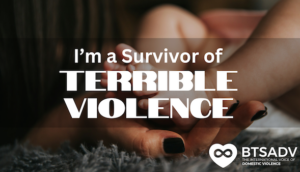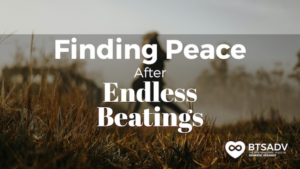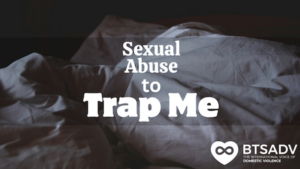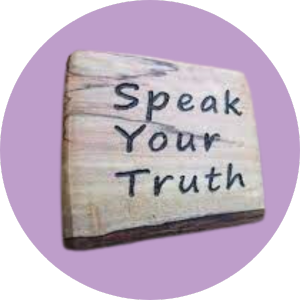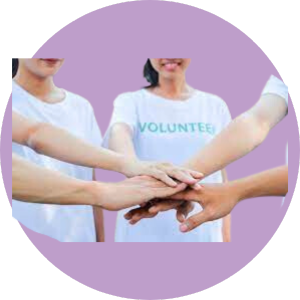By Jenn Rockefeller
I’ve always been the type of person who loves helping others. Many times, this even meant saying yes to someone when I really wanted to say no. This meant pleasing too many people and not maintaining healthy boundaries.
Has that happened to you, too? People-pleasing is an all too familiar occurrence in life. We cross our own boundaries and wind up sacrificing our mental and emotional well-being.
But having healthy boundaries in all aspects of our lives is vital to our relationships – not just others around us, but also with ourselves. What do healthy boundaries look like and how can you learn to say no?
What healthy boundaries look like
Boundaries come in several forms – physical and emotional are just two of them. Physical boundaries can simply mean that you don’t want someone touching, hugging or kissing you. As a child, maybe you didn’t like being “forced” to hug someone. That’s a physical boundary. Even as adults, we set our own rules within relationships. Maybe you don’t like shaking someone’s hand when meeting them. And that’s okay.
Emotional boundaries mean that you and you alone are in control of your own thoughts and feelings. Our abusers are so used to telling us how to act, think and feel. When we are out of our situations, we can set our own rules and let others know that our thoughts and feelings are our own.
Within our interpersonal relationships, we set boundaries to tell others what we do and do not want in these relationships. It is like having an invisible line that you set that others cannot cross. It’s creating a life for yourself that is free from stress, abuse and conflict.
Having healthy boundaries means setting limits. It’s what you will and won’t allow. Only you can decide that, though. It will take time to voice your wants and needs. When that time comes, healthy boundaries may look like this:
- You communicate your wants and needs clearly.
- You know your limits, both physically and emotionally, and will voice that when needed.
- You ask for help when needed.
- You stand up for your values and beliefs, and don’t back down just to keep the peace.
- You have a healthy respect for yourself.
How you can learn to say no
Learning to say no is perhaps one of the toughest things for domestic violence survivors to do. We are so used to saying yes, even when we mean no. We give in. We relent because we just don’t have the energy to fight anymore. We just want peace.
“I realized I was afraid of saying no because my biggest fear is rejection. I was afraid that every time I did this, I would disappoint someone, make them angry, hurt their feelings, or appear unkind or rude,” stated a Tiny Buddha article. This quote truly hit deep because this was me exactly! Abusers know this about us and exploit that to the point of breaking us down to get us to say yes when all we want is to say no.
Abusers never understand that “no” is a complete sentence. They are never satisfied with that. They always want explanations from us. Over time, we learn that we always need to explain ourselves whenever we say no to someone. We can say no without having to explain!
A PsychCentral article gives the following tips to help you learn how to say no:
- Keep your response simple.
- Buy yourself some time.
- Consider a compromise.
- Separate refusal from rejection.
- Don’t feel guilty for saying no to your children.
- Be true to yourself.
The above tips will help when saying no to someone. Keep in mind that you are not asking for permission – you are merely letting that person know that you are not able to commit. Also, compromising is only if you DO want to say yes, but have a time limit on your availability. Above all, the tip of being true to yourself is vital – you need to remember who you are and what you want in life, otherwise, you run the risk of losing your identity to those around you.
Why it’s healthy to set limits
For domestic violence survivors, setting boundaries of any kind can be very difficult. We are so used to bowing to our abuser’s wishes out of fear of retaliation. We give in to keep the peace. But in our healing journeys, it is imperative that we remind ourselves that we have value and that our thoughts and feelings matter. Learning to respect our own value in our healing journeys will take time. We were conditioned to believe that we hold no value and that we don’t matter. But now, we are gaining confidence, self-respect, self-reliance, and self-esteem – all because we are setting limits and healthy boundaries.
Setting limits is healthy because, little by little, we will gain our power back. We will begin to see that we have value and we matter. It’s healthy because we not only let others know what we will and will not accept, we also let ourselves know this. We reaffirm within our hearts that we will not accept the type of behavior again that we received when we were with the abusers. We have value. We matter.
If you or someone you know is in an abusive relationship, there is help. You can visit the Break the Silence Against Domestic Violence website at www.breakthesilencedv.org or chat with one of our helpline advocates at 855-287-1777.
========
Share Your Story
Sharing our stories can be incredibly empowering while also helping others connect with survivors who have similar experiences. If you are inspired to share your story with us, submit here. You can choose to remain anonymous.
You can also donate to BTSADV here.
